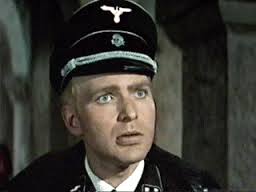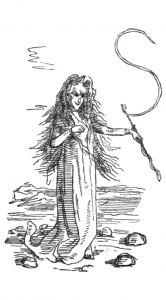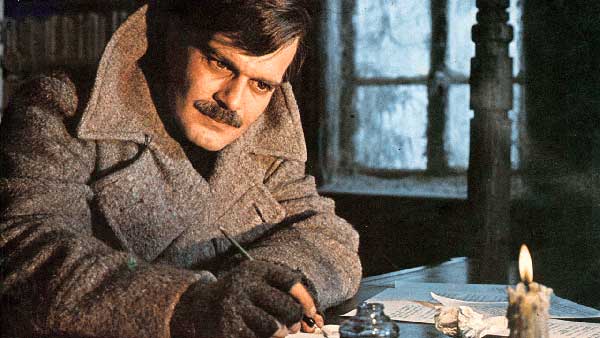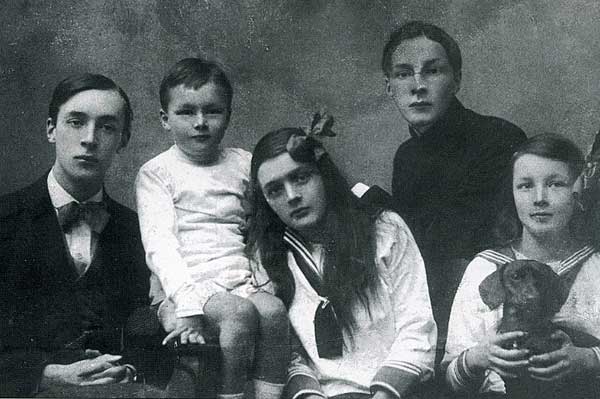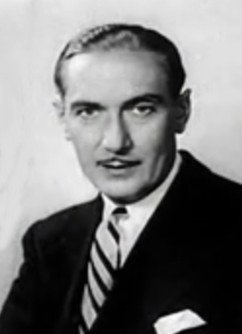The Varnished Culture's Thumbnail Reviews
Regularly added bite-sized reviews about Literature, Art, Music & Film.
Voltaire said the secret of being boring is to say everything.
We do not wish to say everything or see everything; life, though long is too short for that.
We hope you take these little syntheses in the spirit of shared enthusiasm.
Long Day’s Journey into Night
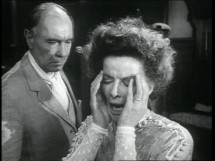
(Dir. Sidney Lumet) (1962) (Written by Eugene O’Neill)
As Tolstoy said, “Happy families are all alike; every unhappy family is unhappy in its own way.” This look through the microscope at “the four haunted Tyrones” is a masterpiece of denial, perhaps the first important dysfunctional family drama of the 20th C. O’Neill (16 October 1888 – 27 November 1953) wrote his, a “play of old sorrow, written in tears and blood”, in a haze of drink, depression and clarity, in the late thirties, touching largely upon his own operatically-soapie family, dedicated to his last, controlling wife, Carlotta; dedicated to her almost as a confession. You can find traces of this classic in quite a few galvanising pieces by later modernists, in particular and memorably, Edward Albee.
It’s a play written for (and about) actors, and in this film it is served magnificently by a great actor’s director, and four splendid performances:
James Tyrone is the overbearing pygmy-tyrant (Ralph Richardson). He denies his dying authority and abdicated responsibility, and the effect of that failure on his wife and sons. He deflects this guilt, and salves his deep pain by spending nothing but upon the organisation of his own comfort, and ferocious negative energy, treading on their souls. Richardson’s is a brilliant, sly, arch, gigantic performance, encapsulating the work of a great performer, and of his life’s work.
Mary Cavan Tyrone (Katherine Hepburn), shaking like a leaf, hooked on morphine, is desperately concerned for her damaged brood, denying her refuge and the dying light. Mary is the central character in this story and here, Hepburn gives a peerless (possibly her finest) performance, matched only by her role in Albee’s A Delicate Balance.
James Jnr. – Jason Robards Jnr. gives us a piece of himself: barely suppressed intensity helped along with a vat of alcohol. James knows and concedes he is a drunk, but is in denial about his casual fecklessness, his jealousy, and waste of talent.
Edmund – Dean Stockwell, going from Compulsion to Consumption, coughing his lungs out, and looking white as Caspar the Unfriendly Ghost, is as sensitive as the rest of them, has fled to escape and deny the nest, only to find disease and return, to embrace a much greater world of malady. He denies that anything going on has to do with him, but he gets a special pass in this case because he’s dying (in elegant, Hollywood style), of TB.
“The always drunken” family eke out the night till Mother appears, as in a spectral dream, to confess that she “fell in love with James Tyrone and was so happy for a time.”
Lumet sets his 1912 New England summer house (“as lonely as a dirty room in a one-night stand hotel”) in glorious, dreary, wintry black-and-white, and avoids giving-in to fake dynamism, film’s false insurance against a charge of staginess. And he rubs-it-in by having sweet layers of a tasteful piano composition, by Andre Prévin, overlay Mary’s soliloquy, speaking on a range of things lost, including her “crippled [piano] fingers.”
What these four need is: a decent doctor; the Betty Ford Clinic, and to sit down and play Cards Against Humanity together. They lack these resources, for good or ill, and we despair, genuinely and utterly, as they fall down the drain. A superb film of a theatrical masterpiece, O’Neill’s greatest rage against “the closed-shop, star-system, amusement racket” that has won, and now rules, most of the world.
Continue Reading →Samson & Delilah – The Unforgiving Present
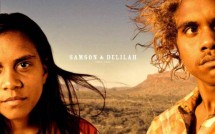
(Samson & Delilah, directed by Warwick Thornton) (2009)
“The Future is Unforgiving” (Photographic Exhibition by Warwick Thornton, Anna Schwartz Gallery, Melbourne) (July into August, 2015)
At the Anna Schwartz Gallery, 185 Flinders Lane, The Varnished Culture saw the exhibition by Warwick Thornton, whom we knew only from his film Samson and Delilah (see thumbnail review below). Born and bred in the Alice, Thornton has possibly observed a thing or two about dysfunctional folks and the impact of the excesses of received culture on indigenous perspectives. Here, in a cavernous, concrete-floored space, there are a small series of interrelated images of aboriginal children. There are three large photos on one wall, featuring two girls and a boy, with a complementary smaller image on the opposite wall. Somewhat oddly, each large work with its corresponding miniature is described as a diptych.
The larger stills are overtly social-political: they feature children trapped in the standard badges of establishment consumption, easy targets of western mass banality. One girl, Luka, has soft-drink cans strapped to her torso as if she wore a suicide vest; another, Shanika, wears a similar vest, of beer cans. Sterling has hamburger containers and large fizzy-drink cups strapped to his garment. The point is obvious, technically well-made, but rather a crude and transparent one.
The smaller adjacent pieces are more interesting, with the young ladies holding boomerangs and the lad a slingshot, stretched ready to fire. Again, the juxtaposition is awesomely trite, but the images are nicely constructed.
At the far end of the room, a video displays the same children, posing before the camera. Occasionally things may be muttered but there is no sound, just children reacting, typically, in such a circumstance. “Luka” in particular, is a good natural actress, mugging as most children do. She is also extremely pretty, and gazing at her, in her white lace dress and smiling soundlessly back at him, P began to back away, feeling rather alarmingly foolish and prurient.
Professor Marcia Langton’s concise and thoughtful note to the exhibition, and in particular the video, The Future is Unforgiving, suggests “the innocence, the natural grace, the optimism, innate in the state of childhood, with all its human potential…is also a portrait of the viewer and their social responsibility to allow these young lives to flourish unimpeded by the known destructive elements presented in the photographs.”
It is difficult to unpack this. Professor Langton’s wielding the phrase “Social responsibility” gives rise to two reactions: “why is she looking at me?” and a recollection of the old saw that you can debase any concept by tacking the word “social” on the front of it. For in so tacking-on in this instance, what is implied? That we all bear such a responsibility? If so, in what sense? The Varnished Culture is confused to learn that it takes a village to raise a child, having naively considered this was the job of its parents.
Never mind: the political impact of art can be weak, even negligible: consider the head-on-wall-banging of some reformist novels of Charles Dickens in this regard. The present exhibition should be seen, but it pales, out of comparison with some of the artist’s other work.
Which brings us to the good news. P was simply not in the mood to see Samson & Delilah some years ago, expecting the grim, parochial agitprop so depressingly prevalent in contemporary Australian film. L more wisely suggested it might be worth a look, and so it proved. Following the travails of two doomed aboriginal youths, the film, in unhurried, unforced style, shows the building of their relationship, despite the relentless adversity to which they are subjected (and to which, in some cases, they subject themselves).
Stunningly shot and paced, the film is a directorial triumph, with beautifully natural, stunning performances by the two leads, Rowan McNamara and Marissa Gibson, who display considerable charm without a hint of artifice. You are completely drawn to them as people, completely immersed in their parlous state, and on the edge of your seat concerning their hazy future. A discreet, restrained and tasteful masterpiece.
Continue Reading →Where Eagles Dare
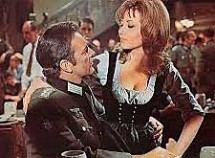
(Dir. Brian G Hutton) (1968)
Clive James once wrote that the film that followed him about the world was The Naked Jungle. Our own bete noire is Where Eagles Dare. The Varnished Culture has gone to the cold heart of country Victoria, to take the waters and sweat out the toxins of popular culture, and what do we find, after a purifying mineral ritual, massage and facial? Where Eagles Dare on the television! P’s late father-in-law loved this film, and what red-blooded man wouldn’t? Richard Burton and Clint Eastwood talking English/German/American/English as they infiltrate a Nazi fortress deep in the Alps, gain vital information, gather two patriotic lovelies and decamp, along the way wasting half of the Wehrmacht. Comic book action balanced with a literate script and immaculate diction!
Continue Reading →Penguin Island
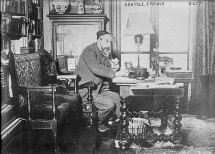
(Anatole France) (1908)
A brilliant and literary satire of the rise and fall of civilisation, replacing evolving man with evolving penguin, a flock of whom are baptised by the half-blind Abbe Maël and whose ascent takes the form of first clothes, the nascent concept of property, monogamous marriage, the rise of dogma and the renaissance, even the Dreyfus affair.
Along the way, France savages the historian in a way that suggests the opprobrium he got for his Jeanne d’Arc was taken fairly personally. His penguinographer prefaces in perplexity, “We do not know exactly how things have happened, and the historian’s embarrassment increases with the abundance of documents at his disposal.”
Our favourite is the brief but learned discourse on ‘The Primitives of Penguin Painting.’ At its zenith, France writes of penguin civilisation that “an immense and regular ugliness reigned within it.” France’s biographer fairly comments that Penguin Island “still firmly takes its place, alongside Gulliver’s Travels and Animal Farm amongst the greatest of social satires.”*
This novel is “glinting with irony and wise mischief…When the literary world is tired of alternating doses of syrup and vinegar, perhaps it will return with pleasure to the light dry wine of Anatole France.”**
*(Anatole France, David Tylden-Wright, 1967, p.248.)
**(Literature and Western Man, J. B. Priestley, 1960, p.340.)
Continue Reading →Vanity Fair
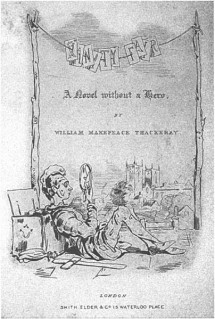
(William Makepeace Thackeray) (1848)
Well. Rebecca Sharp. She’s a real dilly.
Nabokov, apropos Humbert Humbert, pointed out there were not many memorable literary characters we’d like our children to meet: “Would we like our sons to marry Emma Rouault, Becky Sharp or la belle dame sans merci?”*
This vivid and wordy book has caused charges of carelessness to be leveled at WMT: the chronology is at times out of whack, different characters seem to age in different time dimensions, for instance. But so what? This is a masterpiece of playful improvisation, and after all, plenty of dull, dud novels have been executed, in several senses, with diligence, fretfulness, and close attention to detail.
In Becky Sharp, Thackeray has created a great character, a true anti-hero without so much as a dollop of sugar-coat.
[*Letter to Katherine A. White, 4/4/1957.]Becky as Napoleon
Continue Reading →The Burglars
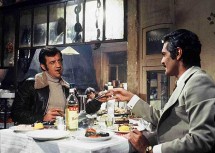
(Dir, Henri Verneuil) (1972)
A nifty cat-and-mouse jewellery heist caper set in Athens, in a time when you could get a decent meal for a fistful of drachmae. Omar Sharif is very good as the oily and corrupt copper, who is on to Jean-Paul Belmondo and his gang of emerald thieves. A top car chase, fights, romance, double-dealing and a unique climax in a grain hopper. A little cheesy but a relief to watch nowadays if you’re sick of Fast and Furious # 43.
Vale Omar Sharif (10 April 1932 – 10 July 2015). He was not a great or imposing actor by any means, but he did add a measure of class to a number of films. Though L and P violently disagree about Lawrence of Arabia (1962), his performance was vibrant and appropriately restrained. Other good work can be savoured in Behold a Pale Horse (1964), Funny Girl (1968), The Last Valley (1971), La Casse (The Burglars) (1972), and, we guess, Doctor Zhivago (1965).
Continue Reading →
Pnin

Say what you like but America and Americans are lovely. In this grand, concise novel, Nabokov sets his fish, Professor Timofey Pnin, given new teeth to match the wounds of his new challenges, in unaccustomed, American, waters, with morbidly hilarious results, in an “almost perfect work” according to Harold Bloom, the man who, like Anna Cunningham, has read everything.
Nabokov described the pedantic Professor as “A man of great moral courage, a pure man, a scholar and a staunch friend, serenely wise, faithful to a single love, he never descends from a high plane of life characterized by authenticity and integrity. But handicapped and hemmed in by his incapability to learn a language, he seems a figure of fun to many an average intellectual…[he has a] tender and lovable core.”
This is the outstanding émigré novel, with the added frisson of doomed love. Pnin is one of the most romantic and engaging academics in literature, and when he has been bested by that Wagnerian villain, Hagen, at a faculty party he has put on with great effort, he solemnly attends to the washing-up. Then, during the course of this task, a “large bowl of brilliant aquamarine glass with a decorative design of swirled ribbing and lily pads” is dropped and, we suspect, cracked beyond utility. There is nothing so bourgeois as to howl over objects but, so skilfully does VN build up scene and character, you share a moment of genuine anguish over this piece of coloured glass.
Pnin is probably VN’s great character. Afterwards, he concentrated on marginal evil clowns. Professor Pnin is genuinely likeable, his flaws on his sleeve, his amorous and assimilating situation hopeless and serious. There is no warmer and earthier Nabokov story than this and whilst his sublimely barren books catch our breath, this short tale lets us exhale and exalt.
Continue Reading →
I Pagliacci
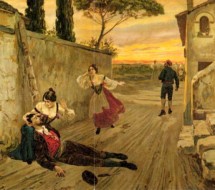
and Cavalleria Rusticana
(Filmed at the Met, Northern winter, 2015) (screened in Adelaide, 8 July 2015)
It’s more (squalid, proletarian) potboiler than verismo, but this time-honoured double bill of adulterous, hypocritical, homicidal southern Italians is, pardon the expression, impervious to the knife. The Met, under baton of Fabio Luisi, is faultless, and the direction and cinéma vérité staging, after Sir David McVicar, is pretty good, albeit a little clunky (*QUIBBLE ALERT*). Appropriately, ’twas the Met that first combined these two hardy perennials in 1893; a good idea that seems obvious in hindsight.
The pieces are worthy but slight, crisp wafers soaked in goose fat. The entr’acte to Pagliacci is better than the overture…the wooden platform used in Cav. is a bit smaller than centre court at Wimbledon but larger than a squash court at the Whitbury Leisure Centre, and it serves as a stage for solemn, pious, lip-smacking, misogynistic betrayal, sexual assault and casual slaughter, the kind of repulsive and boorish behaviour that has honoured the South since the Sicilian Vespers in 1282. But that’s another story (as Verdi might say) and anyway, don’t we just love it? Pag and Cav are great soaps with gorgeous music and denouements of high melodrama. And we can settle back and appease our lusts by admiring Lola’s and Nedda’s busto provocante ahead of all the blood and guts. A terrific cast, who rise above some juvenile set pieces, round out a can’t-miss double-header.
Great direction for stage and film – the Met is ahead of everyone in its recordings of productions, thanks to superb technical and artistic skill, supported by the Neubauer Family Foundation – TVC has no idea who that is but the Foundation is disbursing some dough to good purpose.
*Quibbles: 1. I Pagliacci takes place in Calabria in the summer of 1870, not in Sicily in 1949. 2. The travelling troupe is borne in a donkey-cart, not a truck out of Wages of Fear crossed with a long trailer, messy enough to make Lucy and Ricky ashamed. 3. In the distance, beyond the truck, is a bar with fairy lights full of ‘types’ in singlets…a scene that constitutes a kind of bastard marriage between a De Sica and a Rossellini film. (These are merely quibbles).
Continue Reading →Watch on the Rhine
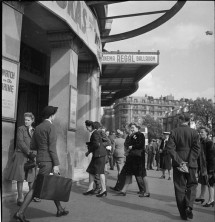
(Dir. Herman Shumlin) (1943)
Nazis, ISIS, Port Adelaide Football Club…the forces of evil bring us together and so it proves here, in Warner Brothers’ film of Lillian Hellman’s play about a member of the resistance and his family, seeking refuge from the Nazis in his wife’s family dream house in Washington DC, some time before Pearl Harbour shook the American lethargy…
Bette Davis and Paul Lukas are given some very snappy lines, but they rise above them and give us performances that convince us of a couple driven to poverty and danger, for a cause. Bette Davis is wonderful (some thought her role marginalised and consequently over the top – completely wrong) and Paul Lukas, a brilliant actor, gives an astounding performance, suggesting the drive, passion, steel, and the guilt, of the true, committed warrior against tyranny. The guilt, that is, of a man who must do wicked things in a higher cause, who sacrifices not only himself, but his willing, loving wife, and children too.
Whilst obviously propaganda straight from Broadway and fed into the Warners’ mill, this is good propaganda, because it is human and, indeed, true. Lukas’ loving youngest son is described as “My biographer…and as accurate as most of them” but the build-up of his character is a great reminder that “fighter against fascism” once was a real job description, and one dark day, may be again, perforce.

‘We speak ignorantly but fluently in German, French, Italian, Spanish…’ ‘…and sometimes boastfully in English.’
And they get to ascend the Washington monument! P was told (in the Land of the Free, circa 1995) this couldn’t be done…It was almost Old Europe vs the New World! In the final analysis, this is a classic love story of a love that can shine under severe duress. One hopes another tyrannical threat is not required for more films such as this.
Continue Reading →Paths of Glory
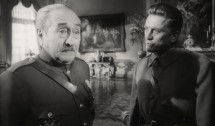
(Stanley Kubrick) (1957)
The wise war-monger, Clausewitz, decreed that the objective should be relinquished when its value was not equal to the cost of its gain. There are many instances in human conflict where this seemingly trite point has been blanketed and lost in the fog, notably the struggle on the western front, 1914-1918.
In Kubrick’s grey and gritty story, Kirk Douglas is given the ridiculous task of taking the ‘Ant-Hill’, a fortified patch of raised ground held by an enemy armed to the teeth. With the inevitable failure of this mission, the superior officer in charge needs a patsy, so three foot soldiers are selected at random for a show-trial and execution by firing squad.
This is a wonderful film, told in matter-of-fact terms, bleakly designed and stunningly shot, with three standout performances: Douglas, stoic as the man in the middle, Adolphe Menjou, as a crafty and conscienceless general, and George Macready as Douglas’ immediate superior, a compelling impersonation of (pardon the french) a complete shit.
Continue Reading →

